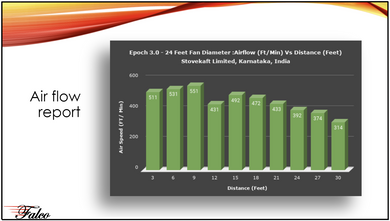As the owner or manager at a production facility, it's crucial to prioritize the comfort and productivity of your employees while also managing energy costs. Striking a balance between maintaining a comfortable environment and keeping energy bills in check is a constant challenge. One effective solution to control energy costs is the adoption of High Volume Low-Speed (HVLS) fans.
These industrial ceiling fans, characterized by their large blades, exceeding seven meters in some cases, operate on the principle of circulating air slowly and efficiently. The unique design allows them to draw air from above, redistributing it downward towards the floor and then outward to the walls. Notably, these sizable fans serve a dual purpose by not only cooling the space in the summer but also aiding in heating during the winter through a process known as destratification, a concept we'll explore shortly. Apart from warehouses and production facilities, HVLS fans find application in diverse settings such as distribution centers, fitness clubs, conference halls, and food establishments.
Cooling:
During warmer seasons, the air movement generated by HVLS fans complements existing air conditioning systems. By providing a refreshing breeze, these fans can make the air feel up to 10°C cooler, reducing the load on air conditioning units and potentially cutting energy consumption by as much as 20%.
Heating:
Addressing the inefficiency challenges associated with heating large industrial spaces is a common concern, particularly because warm air tends to rise. In structures with high ceilings, like warehouses or factories, temperature variations between floor and ceiling levels are common. This often necessitates turning up the heat, making upper levels warmer than required, which is undesirable. Here, destratification comes into play as a smart and straightforward solution. HVLS fans are equipped with powerful blades designed to move substantial air volumes.
The tapered design, with faster blade speed at the tip and a wider profile towards the hub, ensures effective air movement. Factors like blade angle also play a crucial role in performance variation among different fans. Well-performing HVLS fans excel in mixing the warmer air at the top of the building with the cooler air on the work floor, achieving a more uniform temperature throughout the space. The results are impressive: floor-level temperatures can increase by up to 8⁰C, coupled with potential energy savings of up to 30%. Typical payback periods range from six months to two years, making these fans a valuable long-term investment contributing directly to the bottom line.
Watch our video about Epoch Fan Technology
Please call us toll free to discuss your requirements at +1 877 278 6323 or Text at +1 571 781 2453.

